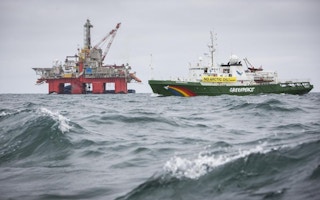Statoil, the Norwegian state-owned company, has announced that it has failed to find commercial quantities of oil and gas in the Barents Sea this year.
The Arctic remains one of the oil industry’s most promising exploration areas. The US Geological Survey says a large part of the world’s remaining hydrocarbon resources − perhaps as much as a quarter of its reserves − is thought to lie in the high northern latitudes of Russia, Norway, Greenland, the US and Canada.
Statoil hoped to find oil in the three test wells it drilled this summer in the high northern Arctic, having made finds in the area in 2011 and 2012.
Dry reservoir
But it has admitted to being disappointed at its latest results, which included a small quantity of natural gas at one site and a dry reservoir at another.
Statoil announced in February this year that drilling in the Johan Castberg oilfield − also in the Barents Sea, off northern Norway and Russia − had produced no oil and little gas.
“
The facts of climate science support the campaign groups: most of the hydrocarbons that lie beneath the Arctic cannot be burned if the world is to avoid dangerous climate change
Irene Rummelhoff, Statoil’s senior vice-president for exploration on the Norway continental shelf, said of the latest drilling operations: “We are naturally disappointed with the results of this summer’s drilling campaign in the Hoop area.”
But the company reaffirmed its confidence in the potential of the area, where the latest drilling was conducted. Rummelhoff said the wells were three out of just six drilled so far in an area measuring 15,000 sq km. Even negative results provided valuable information for further drilling, she said.
“We do not have all the answers about the subsurface yet,” Rummelhoff said in a Statoil statement on the exploration programme. “Non-commercial discoveries and dry wells are part of the game in frontier exploration.”
The possibility and the wisdom of trying to recover oil and gas from the unique and very challenging Arctic environment sharply divide environmental campaigners and the energy industry.
In September 2013, Russian security forces detained 30 Greenpeace activists and journalists and seized their vessel, the Arctic Sunrise, during a protest at an offshore oil rig owned by Gazprom, the Russian energy company. The 30, who included four Russians, were held for around two months before being released.
Old partner
The Russian president, Vladimir Putin, had praise for what he called Russia’s “old and reliable partner” Exxon Mobil as he gave the signal on 9 August for the US energy company and its Russian partner, OAO Rosneft, to start drilling a $700 million Arctic Ocean oil well, Russia’s northernmost well.
“Despite current political difficulties, pragmatism and common sense prevails,” he said at the Black Sea resort of Sochi, as he ordered drilling to start.
“Nowadays, commercial success is defined by an efficient international co-operation. Businesses, including the largest domestic and foreign companies, understand this perfectly.”
The facts of climate science support the campaign groups: most of the hydrocarbons that lie beneath the Arctic cannot be burned if the world is to avoid dangerous climate change.
By 2011, the world had used over a third of its 50-year carbon budget. Only 20 per cent of its total reserves can be burned unabated, leaving up to 80 per cent of oil and gas assets technically unburnable.

















